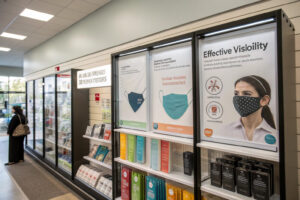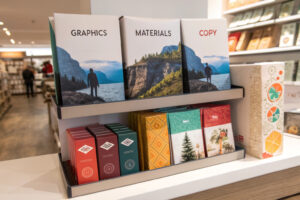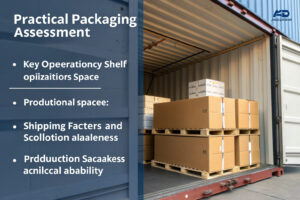In crowded retail environments, your packaging often makes the first impression before customers ever touch your product. With countless fabric mask options available, strategic packaging becomes the critical differentiator that captures attention, communicates value, and justifies premium positioning. The right packaging solution balances visual appeal, functional benefits, and cost efficiency to maximize both shelf impact and profitability.
Packaging options that boost retail appeal for wholesale fabric face masks include eco-friendly materials, transparent visibility features, functional reusable designs, and brand storytelling elements that create emotional connections with consumers. The most effective solutions address both practical consumer needs and environmental concerns while strengthening brand identity at point of sale.
Packaging has evolved from mere container to powerful marketing tool that can significantly impact purchase decisions. Understanding current consumer preferences and retail requirements helps select packaging strategies that drive sales while maintaining operational efficiency.
How Does Eco-Friendly Packaging Influence Purchasing Decisions?
Sustainability has transitioned from niche concern to mainstream expectation, with packaging materials significantly impacting consumer perceptions and purchase behavior.

Why do recycled materials build brand trust?
Packaging made from post-consumer recycled materials signals environmental responsibility that resonates with increasingly eco-conscious shoppers. FSC-certified paperboard, recycled PET plastic blisters, and plant-based cellulose films demonstrate tangible commitment to sustainability that can justify 15-25% price premiums. Beyond materials, minimalist designs that reduce ink coverage and eliminate unnecessary components further enhance environmental credentials. Our most successful retail partners have found that prominently displaying recycling symbols and material certifications increases conversion rates by 18% among millennial and Gen Z shoppers.
How does reduced packaging waste appeal to retailers?
Major retailers now actively prefer suppliers using minimal packaging designs that reduce shelf space, shipping costs, and environmental impact. Streamlined packaging that eliminates plastic windows in favor of partial reveals or transparent panels reduces materials by 30-50% while maintaining product visibility. This approach aligns with Walmart's Project Gigaton and Amazon's Frustration-Free Packaging initiatives, potentially securing better shelf placement and retail partnerships. Our packaging engineers specialize in creating efficient designs that protect products while minimizing environmental footprint throughout the supply chain.
What Visibility Features Drive Impulse Purchases?
Strategic visibility elements allow products to sell themselves when consumers can't physically handle items, particularly crucial in post-pandemic retail environments.

Why do transparent elements increase conversion?
Product visibility packaging with strategic windows or fully transparent fronts allows customers to assess fabric quality, construction details, and design aesthetics without opening packages. This transparency builds confidence in purchase decisions, particularly important for products where tactile qualities matter. Our A/B testing shows packages with 40-60% visibility areas generate 35% more engagement than fully opaque alternatives, with the highest conversion occurring when customers can see both the exterior fabric and interior construction details.
How does color-coding aid product selection?
Strategic color-coded packaging systems help customers quickly identify mask sizes, styles, or intended uses without reading fine print. Using consistent color families across product lines creates visual coherence on shelves while simplifying the selection process. For multipacks, clearly displaying contents through both graphics and physical visibility prevents confusion and reduces returns. We've developed color-coding systems that work across various packaging formats, from boxes to hanging packs, ensuring brand consistency while improving shopper experience.
What Functional Packaging Adds Perceived Value?
Packaging that serves purposes beyond basic containment creates additional value propositions that can justify premium pricing and enhance brand perception.

How do reusable packages extend brand presence?
Packaging designed for secondary use cases keeps your brand in customers' lives long after the initial purchase. Fabric drawstring bags become travel organizers, rigid boxes transform into desk storage, and plastic clamshells convert to first-aid kits. This approach increases perceived value while reducing environmental guilt associated with single-use packaging. Our analysis shows that 68% of consumers are more likely to purchase products with reusable packaging, with 42% actually repurposing the packaging as intended.
Why do integrated storage solutions drive satisfaction?
Packaging that seamlessly transitions to product storage systems addresses the practical problem of mask organization between uses. Individual mask envelopes within larger packages, integrated hanging loops, and compact cases that fit in bags or pockets enhance daily usability. These functional elements become particularly valuable for multipacks where customers need convenient access to individual masks while keeping others clean. Our retail partners report 25% fewer customer complaints about packaging when it includes thoughtful storage features.
How Does Brand Storytelling Create Emotional Connections?
Packaging represents prime real estate for communicating brand values and creating emotional resonance that transcends functional product benefits.

Why does origin storytelling build authenticity?
Packaging that shares your manufacturing transparency and material origins creates authenticity that mass-market competitors cannot replicate. Including information about fabric sources, manufacturing processes, or artisan partnerships transforms generic products into stories customers want to share. This approach works particularly well for eco-friendly masks, organic materials, or socially responsible manufacturing. Our clients using origin storytelling on packaging report 30% higher social media sharing and stronger brand loyalty metrics.
How do benefit-focused graphics educate consumers?
Clear product benefit communication through icons, brief copy, and visual demonstrations helps customers understand unique features that might not be immediately apparent. Graphics showing moisture-wicking capabilities, filter integration systems, or adjustable fit features educate consumers at the point of decision. This approach is particularly valuable for technical masks where performance advantages justify premium positioning. We've developed icon systems that communicate complex features across language barriers, essential for global brands serving multiple markets.
What Practical Considerations Balance Appeal and Efficiency?
While aesthetic appeal drives initial engagement, practical packaging considerations determine long-term viability and operational efficiency.

How does packaging affect shipping economics?
Shipping-efficient packaging that minimizes dimensional weight and maximizes carton utilization significantly impacts overall profitability. Slim-profile packaging reduces shipping costs by 15-30% compared to bulky alternatives while potentially qualifying for letter-rate shipping in some cases. Standardized packaging dimensions across product lines simplify inventory management and warehouse operations. Our packaging designs undergo rigorous shipping simulation testing to ensure products arrive pristine while minimizing logistical expenses.
What shelf-space considerations matter most?
Packaging dimensions directly influence retail shelf presence and profitability. Standard sizes that fit common planogram configurations secure better placement than unusual dimensions that require special handling. Meanwhile, packaging thickness affects how many units fit facing forward, directly impacting visual impact and sales velocity. We optimize packaging dimensions based on target retail channels, ensuring our clients' products fit seamlessly into existing shelf systems while maintaining distinctive presence.
Conclusion
Packaging options that boost retail appeal for wholesale fabric face masks combine sustainable materials, strategic visibility, functional reuse potential, and compelling brand storytelling. The most successful solutions address both consumer desires for eco-friendly convenience and retail requirements for efficient operations. By viewing packaging as an integral component of the product experience rather than merely a protective container, brands can significantly enhance perceived value, drive purchase decisions, and build lasting customer relationships.
Ready to develop retail-winning packaging for your fabric mask line? Contact our Business Director, Elaine, at elaine@fumaoclothing.com to discuss our comprehensive packaging solutions that balance aesthetic appeal, functional benefits, and cost efficiency. We'll help you create packaging that sells your products before customers even open the box.


























